Contact center performance management: Best practices and KPIs

Customer Support Manager - Tier 1
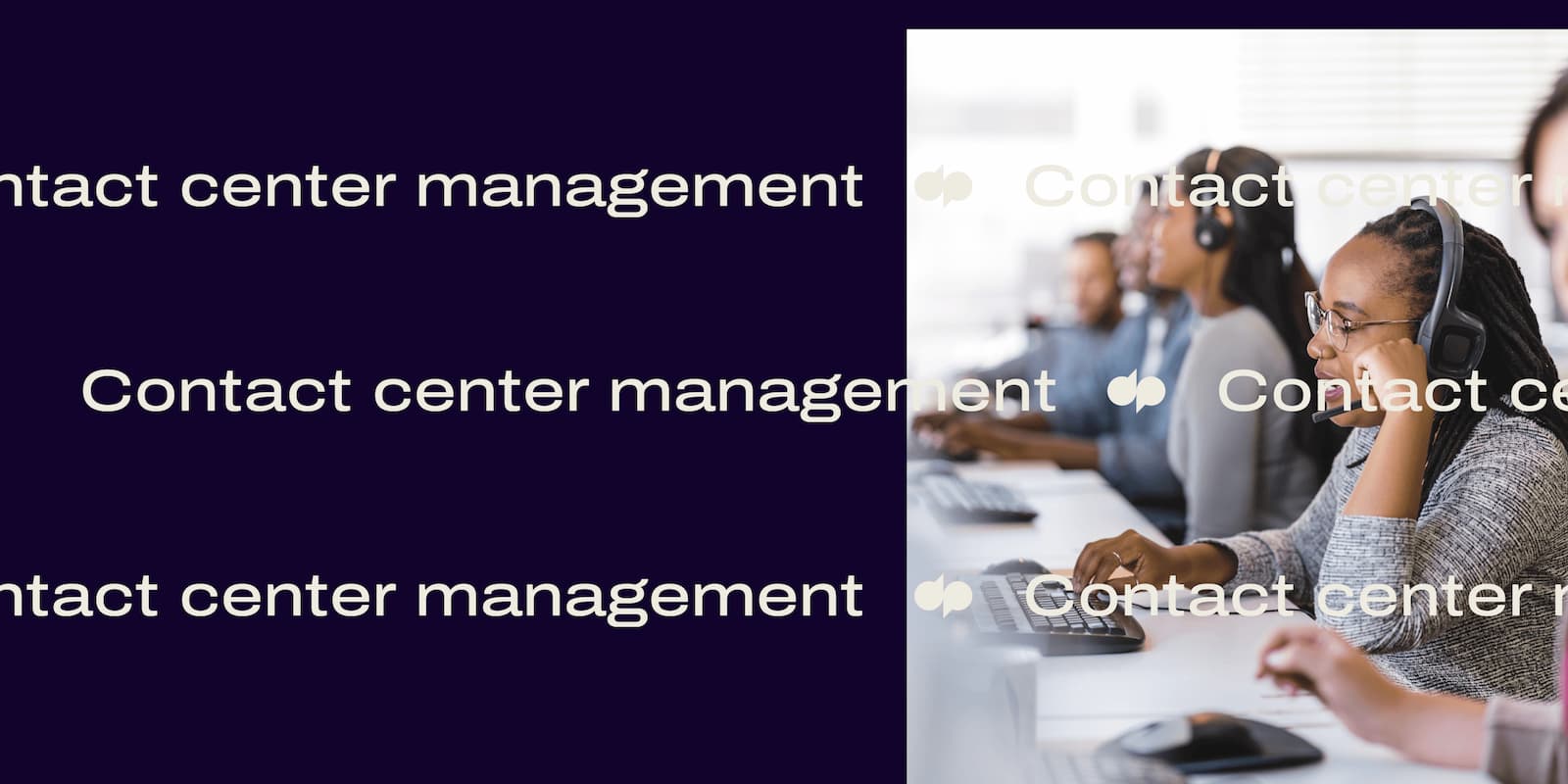
Tags
Share
As a Customer Support team manager here at Dialpad, contact center performance management is always top of mind for me.
Not only is it essential for providing a better experience for your customers, it also helps you get the best out of your support agents and create a work environment in which they can thrive.
But with so many possible benchmarks and KPIs (Key Performance Indicators) to track, it can be a bit overwhelming. In this guide, I’ll walk you through how I tackle quality management and what kind of contact center technology I use to do it.
Common challenges with contact center performance management
Coaching at a consistently high level for distributed teams
There has been a major shift towards remote work in the last few years, with over a quarter of the U.S. workforce working from home. Because of this, it’s no surprise that many contact center agents are likely to be working remotely.
When teams are spread across numerous locations, it can be difficult to implement standardized training practices for all agents. It’s definitely a challenge that hybrid teams like ours have had to overcome, and I’ve found that a fully integrated virtual workspace is essential.
For example, we use Dialpad’s cloud contact center platform to communicate through every channel we need on a daily basis. Team leaders can connect with their teams over team messaging, video calls, and phone calls—and our agents can handle customer calls, live chat messages, and social media messages, all in a single platform:

With training specifically, we can run training webinars using Dialpad’s video conferencing functionality, and even create Spotify-like coaching call playlists using recordings of great (or not-so-great) customer conversations:

This way, no matter where our agents are working, they can access training materials virtually.
More importantly, we also use Dialpad Ai to both determine which agent behaviors need to be improved and refine our coaching.
Dialpad’s Ai Scorecards are an incredibly useful tool that helps contact center supervisors and QA teams scale call reviews and provide objective feedback to agents quickly.
Supervisors and admins can easily create a QA Scorecard, and as the contact center agent handles calls, Dialpad Ai listens to each interaction and automatically suggests when the scorecard behavior is met:

For example, the scorecard behavior might be “Agent asked the customer for their email ID.” If the agent asks for the customer’s email, whoever grades that call will immediately see that the activity was completed, without having to listen to the entire call recording or read the transcript.
This allows contact center teams to scale QA reviews across a much wider range of calls than would otherwise be possible—in turn, this means more effective agents, happier customers, and much improved customer satisfaction metrics.
📚 Further reading:
Learn more about call center quality assurance.
Data collection
In order to determine which areas require performance improvement and whether you’re hitting business goals, you need to be able to not only gather, but also access data easily. This used to be really labor-intensive and time-consuming.
However, gathering this data is important because you need it to improve agent productivity (and the customer experience), and it just helps with call center workforce management in general.
For us, Dialpad’s contact center software includes a range of useful dashboards, including QA scorecards and general call analytics. I’m a big fan of the heat maps, which show us not only call volume patterns but also our average speed to answer:

Live on-call support
I mentioned training briefly earlier, but another challenge when call center agents are remote is helping handle customer conversations in real time.
Remote team members can’t physically shadow anyone, and you can’t sit next to them to coach their calls.
Dialpad has a few features that are super helpful for this. For example, Dialpad Ai not only transcribes calls in real time, its speech analytics feature can also accurately pick up on the sentiment of customer calls. This lets me monitor multiple active calls simultaneously and quickly spot if any calls are going south:
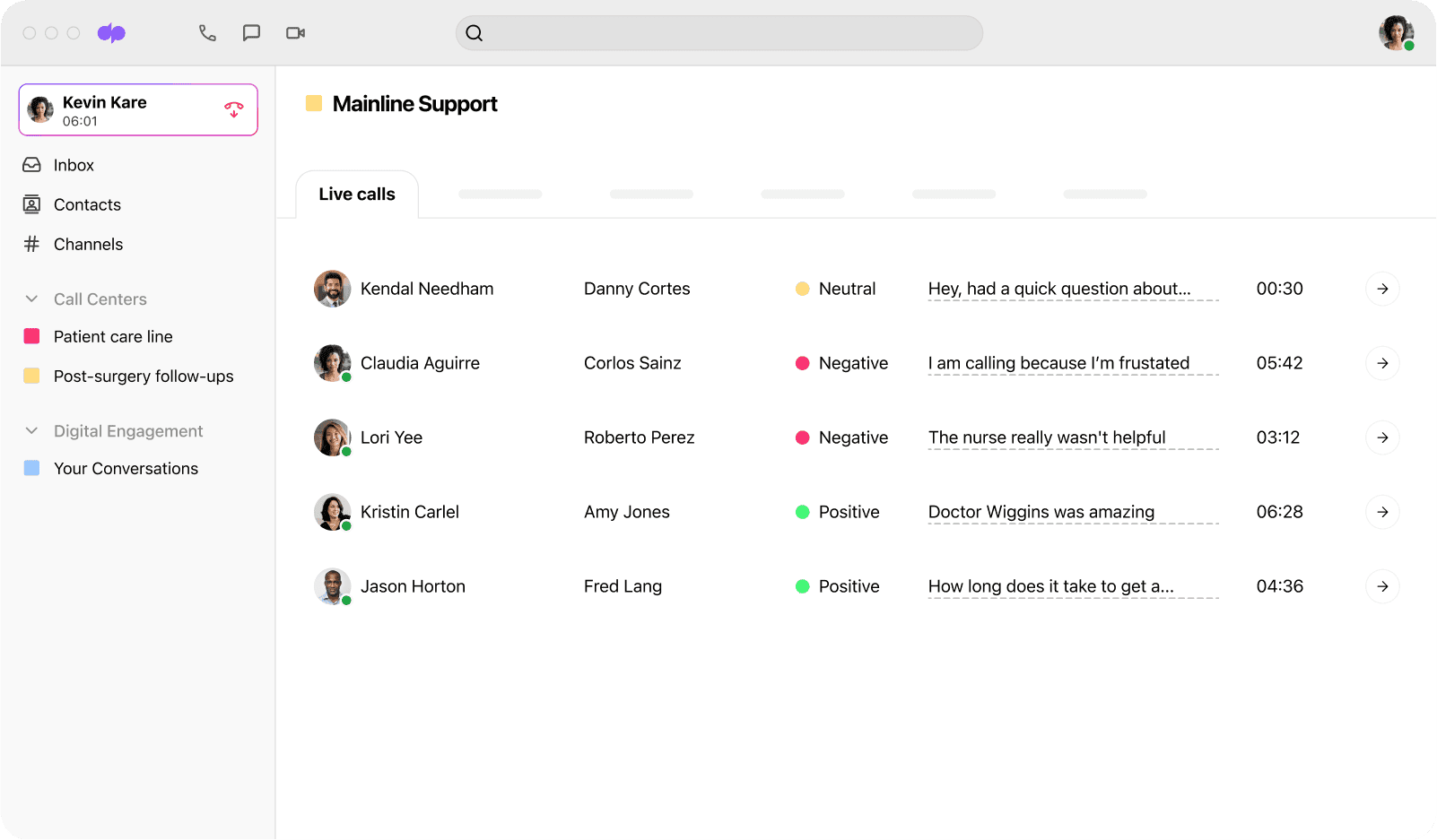
If I do spot a call with negative sentiment, I can just pull up the real-time transcript to get more context before deciding whether I need to jump in to help the agent.
To go one step further, we can also create Real-Time Assist (RTA) cards with tailored notes on different topics to help agents as they’re talking to customers. For example, say we get lots of questions about Feature X and how it works. I can create an RTA card with talking points about Feature X, and set it to pop up automatically on agents’ screens when “Feature X” is spoken:
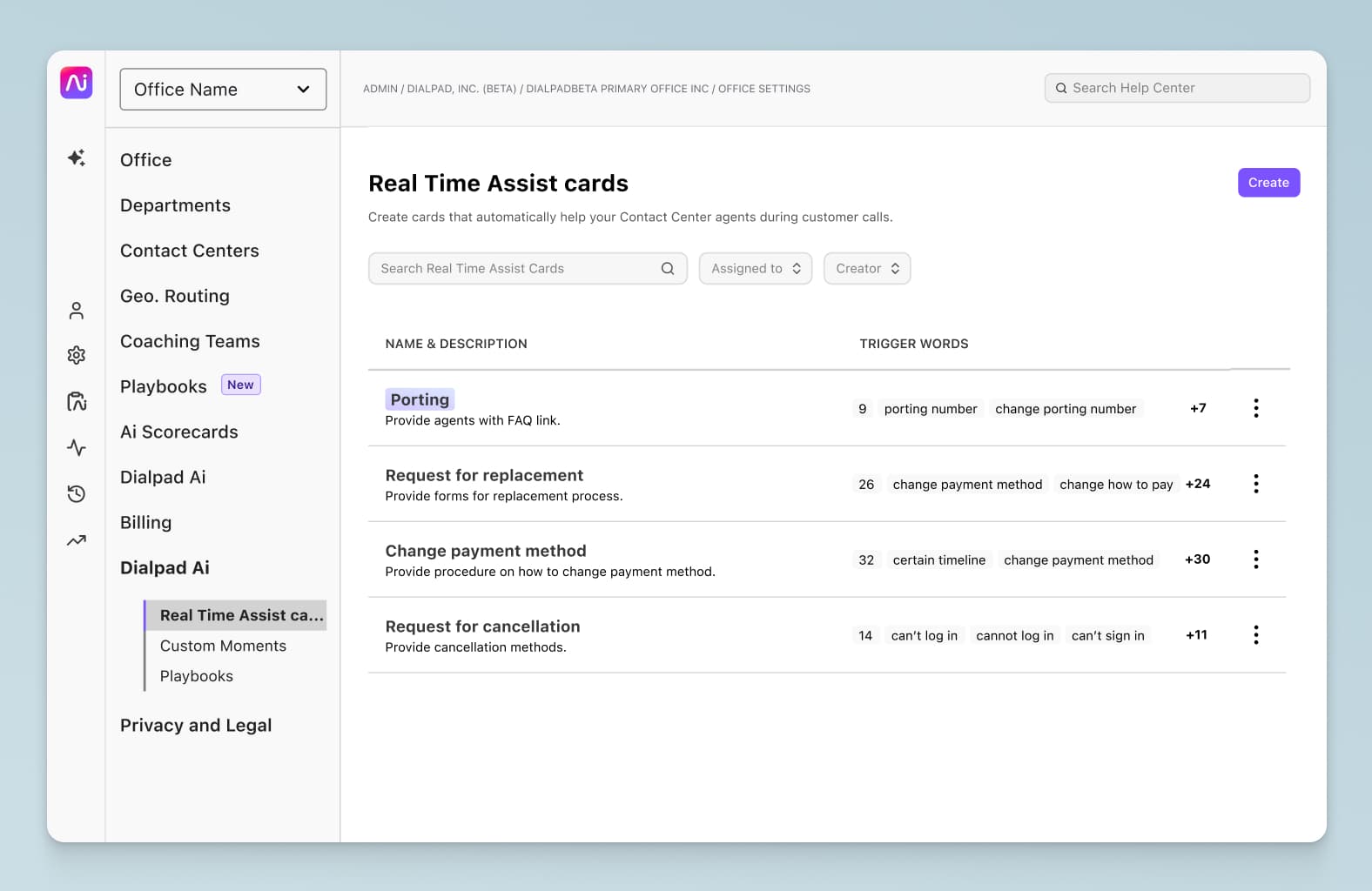
This way, I don’t have to personally sit in on every call, but my agents still get the live on-call support and information they need.
But what if my agents get tough questions about topics that we haven’t created RTA cards for? I don’t really have to worry about that either because Dialpad’s Ai Agent Assist feature can search all of our knowledge bases—including PDFs and even unstructured sources of data like past customer conversations—and pull up information for agents for a wide range of questions:
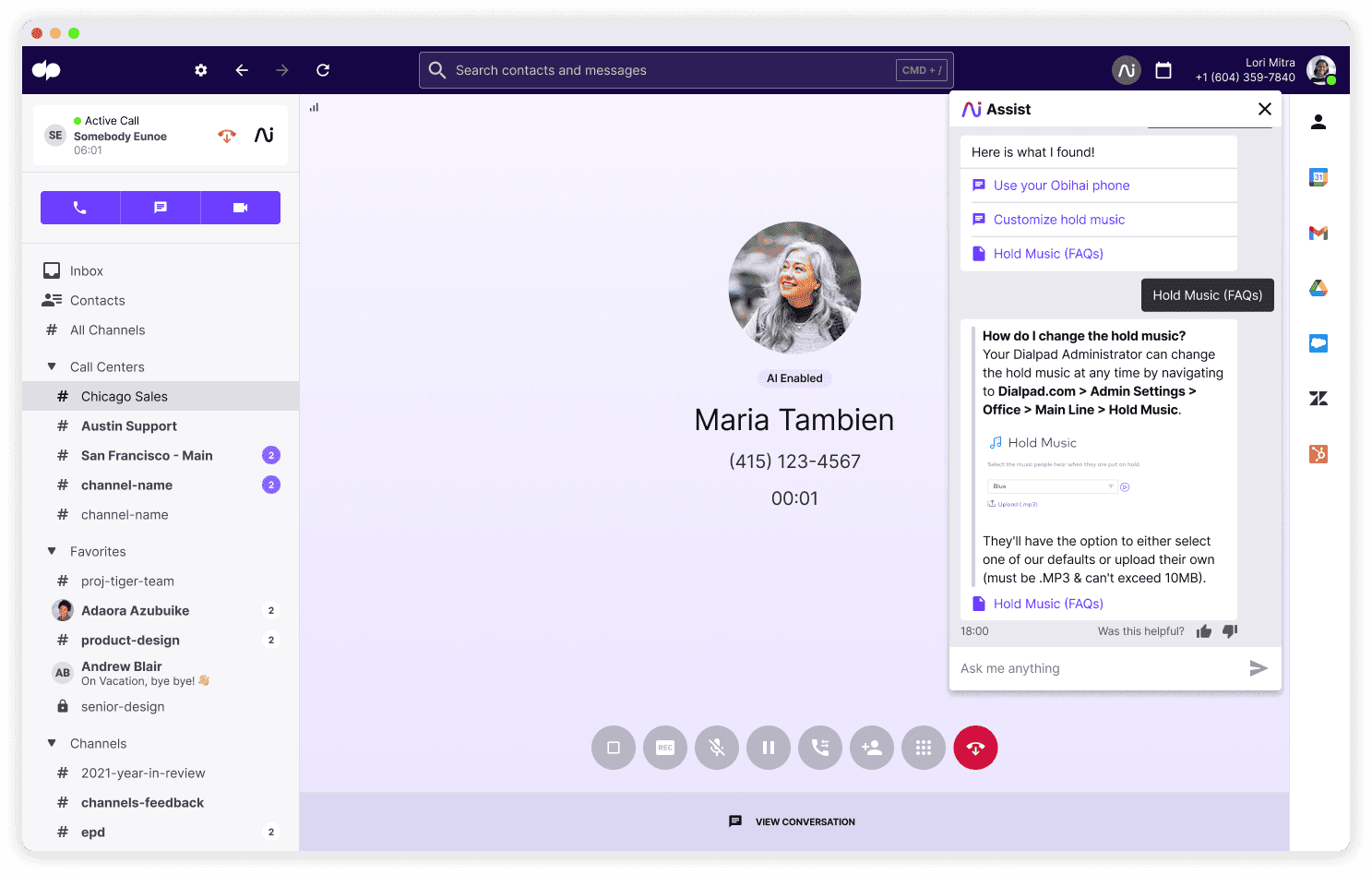
Features like this are important in contact center management, especially as you scale your team, because they let managers oversee more agents efficiently while providing agents with the support they need.
3 best practices to optimize contact center performance management
1. Equip your team with the right tools
One of the most important things for remote contact center teams to be successful? Having the right contact center technology.
The right contact center software is essential for agents to be able to work from home, for one—and a really solid piece of software will make it much, much easier for them to do their jobs well and provide a good customer experience.
For example, if you have an omnichannel contact center and your agents need to handle not only voice calls but also digital and social media channels like live chat and Facebook, then your contact center platform should let them manage those conversations—ideally from a single user interface. This is something our own team has to do, and we can even create chatbot response flows with the no-code drag-and-drop builder from the same app:

All our real-time coaching, transcription, and other AI features are also built into this dashboard—which means we don’t have to keep toggling between different windows and tools.
2. Review data regularly
Key word here: regularly.
As a supervisor, you should be monitoring your metrics on a daily, if not hourly basis depending on the complexity and volumes of your contact center.
Again, we use Dialpad’s contact center platform to track employee performance and all our call center KPIs, and there’s even a useful notification that automatically lets us know if service levels dip below a certain threshold:
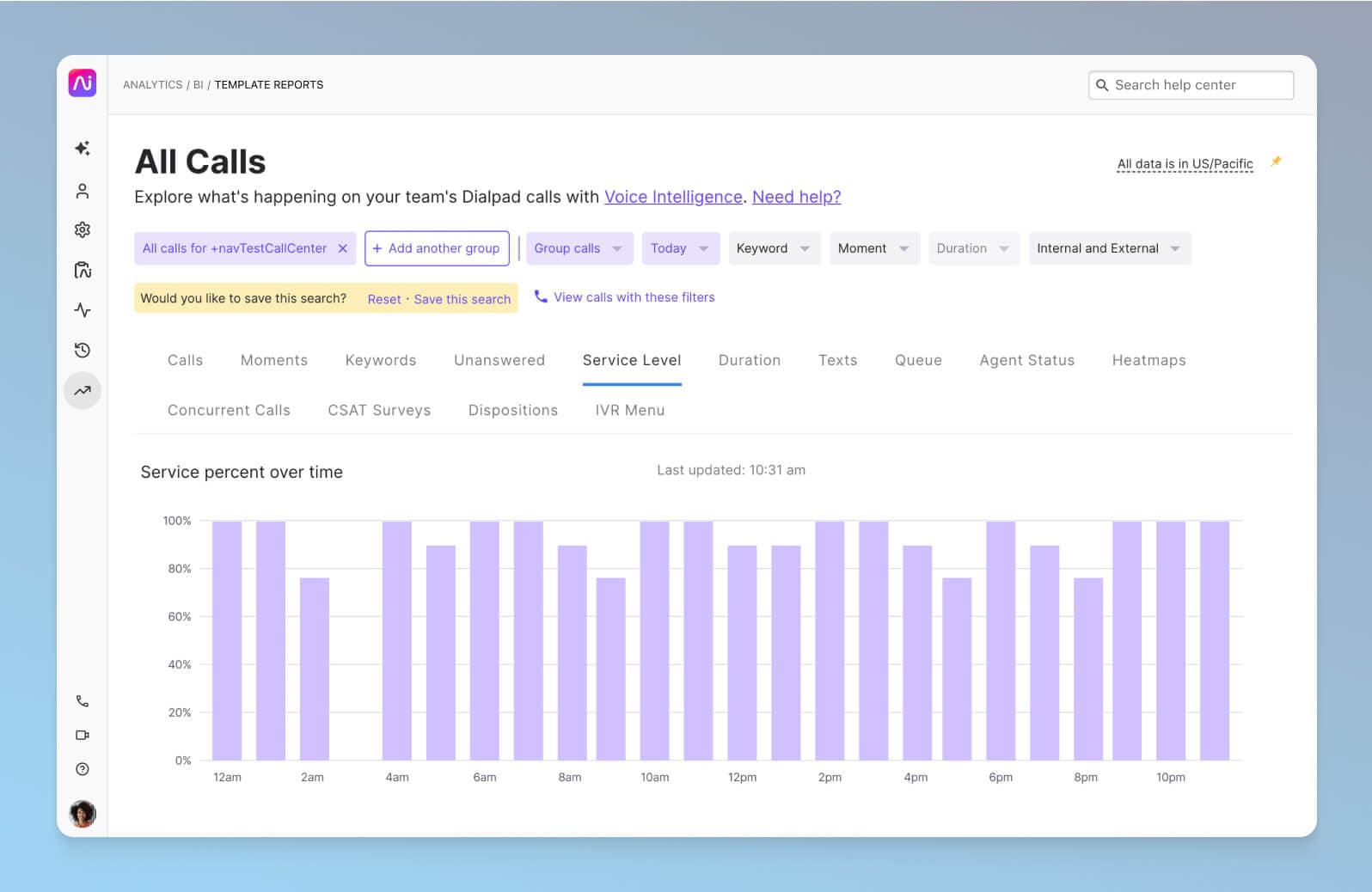
Dialpad also has a very robust Business Intelligence feature that lets us build detailed custom reports if we need to do deep dives into our KPIs:

📚 Further reading:
See how Rently keeps track of their metrics and maintains impressive service levels.
3. Have a retention plan
Contact centers and call centers see some of the highest attrition and turnover rates, and it’s not surprising. Agents have to handle angry customers who can be disrespectful and even abusive at times, and they also have to be able to troubleshoot a huge variety of issues.
The thing is, it’s in your best interest as a supervisor (and for your company too) to keep turnover rates as low as possible—otherwise, you’ll be spending a lot of time training and re-training new agents to replace the ones who left.
So, have a good retention and incentive plan. There’s a lot you can do, from little things like gamification to increase employee engagement, to employee recognition programs and agent performance bonuses for top performers.
Equally importantly, empower your contact center agents to do their jobs well. If they have ambitious targets to hit, you should be certain that you’ve given them the training and tools they need to hit those KPIs.
Bottom line: A good employee experience that empowers agents will lead to happier customers. Don’t neglect your agents!
8 KPIs to measure performance management in a contact center
Here are some of the most vital contact center and call center metrics that I measure on a regular basis. Not every team will need to measure all of these KPIs, and this is by no means an exhaustive list, but it’s a good starting point.
1. CSAT
Customer satisfaction (CSAT) scores are probably one of the most popular KPIs that companies measure when it comes to call center performance management.
To find out your CSAT scores, you’d typically invite your customers to fill out a CSAT survey—after a specific interaction with your business. You could email them the survey right after they bought something from your website. Or, you could play a recording of the survey on the phone after they’ve spoken with someone on your customer support team.
The most important thing here is to make sure you’re sending the survey as soon as possible after the customer interaction so that it’s fresh in their minds. Otherwise, the responses won’t be as accurate.
With Dialpad, for example, we can set up a CSAT survey in minutes and set it to trigger right after the end of a call:

Of course, one of the biggest challenges with CSAT surveys is that not a lot of people actually fill them out.
In fact (depending on the industry and specific business of course), we've found that on average only about 5% of customers actually fill out CSAT surveys. On a related note, usually only the angriest—and happiest—customers actually bother to respond to these surveys, which means your CSAT answers are likely to be very skewed and not representative of how your customers feel overall.
Dialpad's industry-first Ai CSAT feature is designed to solve exactly that. Not only can our Ai transcribe calls and analyze sentiment in real time, it can also infer CSAT scores for 100% of your customer calls thanks to its hyper-accurate transcription feature. The result? A much more representative sample size for CSAT scores, and a more accurate understanding of how satisfied your customers really are:

2. CES score
Customer Effort Score (CES) is a metric that measures how easily a customer feels they were able to do a certain task—for example, getting help with a technical support question or getting a refund processed.
Factors that might influence your CES include things like how many different support channels your company offers and how long they had to wait to speak to an agent.
Your goal should be to make it as easy as possible for customers to get what they need. This could be achieved by ensuring enough agents are available at peak times, or using skill-based routing and IVR menus to ensure customers are directed to the right agent to help them with their query.
3. NPS score
Your Net Promoter Score (NPS) is an indicator of how many of your customers are likely to recommend your business to their friends, family, and colleagues. NPS is measured on a scale from -100 to 100; the higher the score, the more likely a customer is to recommend you.
Like with CSAT and CES, you can ask customers to fill out an NPS survey after they’ve interacted with your contact center. Present them with a scale from 0-10, and ask how likely they would be to recommend you to someone else.
A score of nine or 10 indicates they’re very likely to recommend the experience, making them a “Promoter.” Seven or eight makes them a “Passive”, while a score of six or below makes them a “Detractor.” To find your NPS score, just subtract the percentage of customers who are promoters from the number who are detractors:

4. Average Handle Time
Average Handle Time (AHT) is a hugely important metric for call center quality monitoring, as it tells you how long your agents are spending on each call. (That’s not to say you should just aim for the shortest possible AHT, because this can mean that not enough time is being spent analyzing and resolving queries.)
Instead, have your agents aim for an AHT that’s within an acceptable range to make sure that you’re not risking your customer satisfaction by rushing calls. (Call Centre Helper has some helpful industry standards for AHT here.)
📚 Further reading:
Learn more about call center optimization.
5. Average Speed to Answer
Average Speed to Answer (ASA) measures how long on average it takes for an agent to answer an inbound call.
Lower ASA rates indicate that customers are only being left on hold for a short amount of time, which tends to increase customer satisfaction.
This is also something we track in Dialpad’s contact center platform, thanks to the handy heat maps—no complicated calculations needed on our part!
6. Average after-call work time
The average after-call work time is a measure of how long agents are spending on processing tickets after they've finished talking to a customer.
With Dialpad, you can easily set up a “post-call wrap-up time,” giving your agents time after every call to do any follow-up tasks and log important information before moving on to the next customer:

I encourage my agents to make use of Dialpad’s post-call summary feature. This uses Dialpad’s artificial intelligence to gather the call transcript, action items, and any manual notes together, so that any important discussion points can be seen at a glance.
7. First contact resolution
First contact resolution (FCR), which used to be called first call resolution, measures how many issues are solved the first time a customer gets in touch with your contact center. A higher FCR rate tends to mean higher customer satisfaction levels, as customers have had to spend less time talking to multiple agents, or waiting for a call back.
One pitfall to avoid here is not to over-index on FCR. I’ve seen some agents get pushed really hard to have a high first contact or first call resolution, at the expense of the quality of the service—meaning they try to get rid of the customer too quickly, without solving their problem as well as they could have.
8. Calls in queue
Calls in queue measures how many inbound calls are waiting to be answered. The more calls in the queue, the more your average time in queue goes up, and the more your customer satisfaction score goes down.
In order to reduce the number of calls in queue in your contact center, make sure that you have enough agents available to deal with the volume of incoming calls while taking factors like seasonality into account. (Learn more about contact center staffing.)
Improve your performance management efforts with Dialpad Ai Contact Center
Contact center performance management can be challenging, but it’s crucial for creating a better customer experience, empowering agents, and improving your business’ bottom line.
As you’ve seen, technology is key to many of the most effective strategies. A good contact center platform will go a long way in helping you with not only performance management, but also customer experience.
If you’re looking for a platform that comes with built-in contact center analytics and quality management functionality, why not see how Dialpad Ai Contact Center works with a demo?
See how Dialpad can help your contact center's performance
Book yourself a personal walkthrough of the product or, take a self-guided interactive tour of the app!








